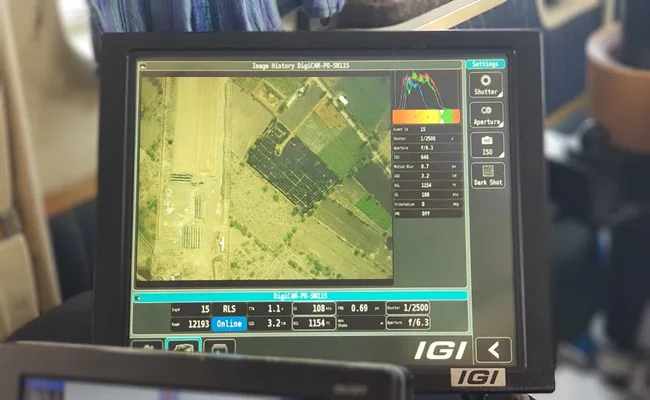Aerial Ground Survey Conducted Through Laser Technique, GPS Data

[ad_1]
Mumbai-Nagpur High-Speed Rail Corridor: Ground data was collected through the LiDAR survey
Mumbai-Nagpur High-Speed Rail Corridor: In order to conduct the ground survey for preparing the detailed project report (DPR) of the proposed Mumbai-Nagpur high-speed rail corridor, the light detection and ranging survey (LiDAR) was started on Friday, March 12, said the National High-Speed Rail Corporation Limited (NHSRCL). This was done to capture data related to ground survey for the 736 km long Mumbai-Nagpur rail corridor, where an airplane fitted with aerial LiDAR and imagery sensors took the first flight. (Also Read: Delhi-Varanasi High-Speed Corridor: Laser Technique Adopted For Ground Survey )
The National High-Speed Rail Corporation Limited, entrusted with the task of implementing the bullet train project, is adopting the light detection and ranging survey technology as it provides all ground details and data in three-four months, whereas this process usually takes 10-12 months by traditional survey methods.
LiDAR Survey for the Preparation of Detailed Project Report for Mumbai-Nagpur High Speed Rail Corridor has started today, where an aeroplane fitted with state of art Aerial LiDAR and Imagery sensors took the first flight and captured the data related to ground survey. #NHSRCLpic.twitter.com/wYOA58bHOq
— NHSRCL (@nhsrcl) March 12, 2021
Mumbai-Nagpur High-Speed Rail Corridor – top features:
- The proposed plan for the approximately 736 km long Mumbai Nagpur high-speed rail corridor will connect Mumbai city with cities such as Nagpur, Wardha, Khapri Deport, Pulgoan, Malegaon Jahangir, KaranjaLad, Mehkar, Aurangabad, Jalna, Shirdi, Nashik, Shahapur, Igatpuri.
- According to NHSRCL, the ground survey is a crucial activity for any linear infrastructure project as the survey provides accurate details of areas around the alignment. The technique uses a combination of laser data, GPS data, flight parameters, as well as actual photographs to provide survey data.
- During the aerial LiDAR survey, 150 meters of the area around the proposed alignment is being captured for the survey purpose, according to NHSRCL.
- After the collection of data, three dimensional (3D) topographical map of the corridor of the proposed alignment on a scale of 1:2500 will be available for designing of the vertical and horizontal alignment, structures, location of the stations and depots, land requirement for the corridor, identification of project affected plots or structures etc.
- In order to provide clear pictures of the structures, trees, and other minute ground details, 100-megapixel cameras are being used for the LiDAR survey.
Due to its high accuracy, the aerial LiDAR survey technique was adopted for the very first time for the prioritized bullet train corridor – the Mumbai-Ahmedabad high-speed rail. This was the very first time when the method was utilized for any railway project in the country. The data provided through the LiDAR survey technique can be useful for vatrious projects including surface transport, roads, irrigation, landslides, canals, city planning, etc.
NHSRCL has been entrusted with the task to prepare the detailed project reports for seven proposed high-speed rail corridors and LiDAR survey technique will be used for conducting ground surveys in all the corridors.
[ad_2]
Source link

